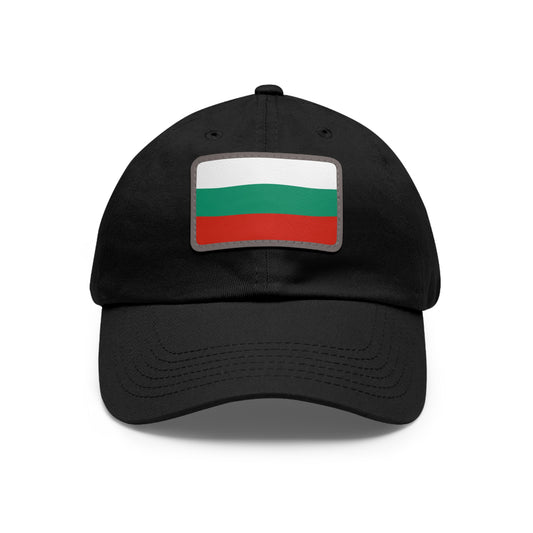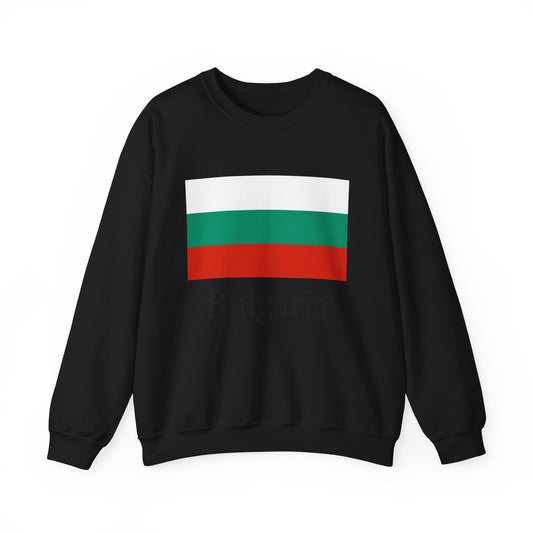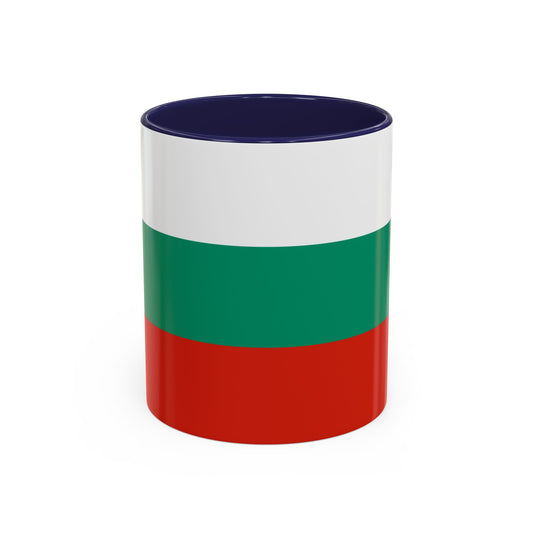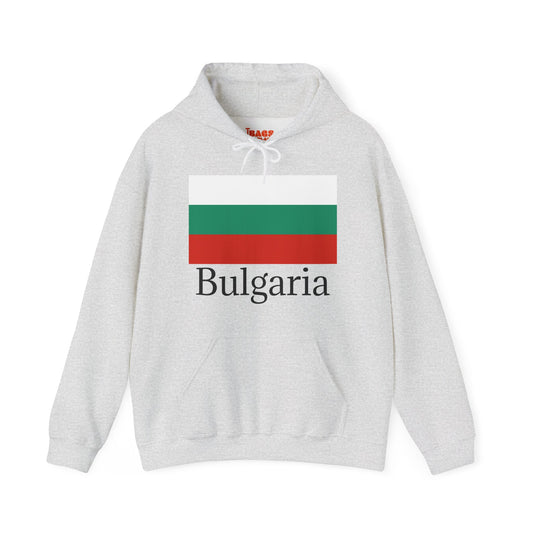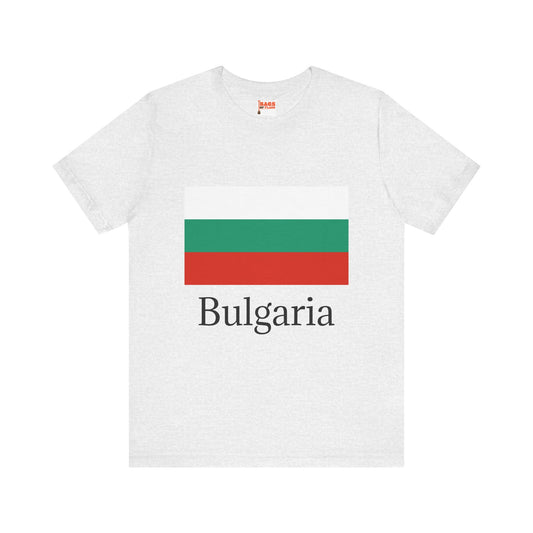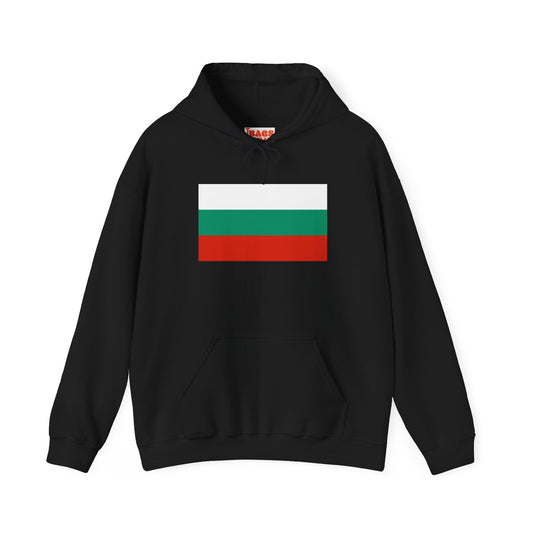-
Bulgaria Pillow
Regular price $22.65 USDRegular priceUnit price / per -
Bulgaria Backpack
Regular price $59.79 USDRegular priceUnit price / per -
Bulgaria Leather Patch Hat
Regular price $18.85 USDRegular priceUnit price / per -
Bulgaria Sweatshirt
Regular price $34.15 USDRegular priceUnit price / per -
Bulgaria Flag Sweatshirt
Regular price $34.15 USDRegular priceUnit price / per -
Bulgaria Mug
Regular price $11.65 USDRegular priceUnit price / per -
Bulgaria Hoodies
Regular price $34.40 USDRegular priceUnit price / per -
Bulgaria T-shirts
Regular price $22.79 USDRegular priceUnit price / per -
Bulgaria Flag Hoodies
Regular price $34.40 USDRegular priceUnit price / per -
Bulgaria Official and Historical Flags
Regular price From $43.20 USDRegular priceUnit price / per
Collection: Bulgaria
The Bulgarian flag, known as the flag of Bulgaria, holds deep historical significance and cultural value for the country. From its design to the protocols surrounding its display, the Bulgarian flag symbolizes national pride and unity. We will explore the design, historical context, symbolism, current relevance, and additional facts about the Bulgarian flag.
Overview of the Bulgarian Flag's Design and Colors

At the core of Bulgaria's national identity is its vibrant flag, which presents a trio of horizontal stripes, each charged with its symbolic hue: white at the top, green, and then red at the base. This color scheme is visually striking and deeply meaningful, capturing the essence of Bulgaria's natural beauty and turbulent history. The white stripe evokes the purity of the skies and the quest for peace, the green stripe mirrors the country's lush landscapes and agricultural heritage, and the red stripe recalls the courage and the blood spilled in the struggle for national liberation.
Together, these colors weave a narrative of resilience, hope, and sovereignty, painting a picture of Bulgaria's past, present, and aspirations for the future. The arrangement and proportion of these colors have remained consistent, serving as a steadfast emblem of the nation's enduring spirit and values.
Historical Context: From Adoption to Present Day

The roots of the Bulgarian flag can be traced back to the April Uprising against Ottoman rule in 1876, a period marked by the quest for national independence. During this time, the flag, with its distinctive trio of colors, first emerged as a symbol of unity and resistance among the Bulgarian people. The modern flag version was officially adopted on November 27, 1990, signifying a new chapter in Bulgarian history following the end of communist rule. Throughout the years, the flag has seen alterations, notably in 1948 when the communist government added a coat of arms to the white stripe.
This feature was later removed to restore the flag’s original simplicity and symbolism. This flag evolution mirrors the country's turbulent journey through periods of conflict and political upheaval and eventually toward a future grounded in democratic values and national pride. The flag's enduring design, with its deep-rooted symbolism and colors, continues to embody the aspirations and resilience of the Bulgarian people.
Symbolism: Deciphering the Colors and Design
Each hue on the Bulgarian flag carries a profound meaning deeply rooted in the nation's ethos and historical narrative. The top stripe, adorned in white, symbolizes the enduring desire for peace and the purity of spirit that defines the Bulgarian people. This color reflects the nation's aspirations for tranquility and unity amidst its tumultuous history.
The middle green stripe pays homage to the fertile lands of Bulgaria, evoking the country's agricultural tradition and the hope it brings for prosperity and renewal. It serves as a reminder of the natural beauty that blankets the country, from its verdant plains to its forest-covered mountains. Lastly, the vibrant red at the bottom of the flag signifies the bravery and the blood shed by those who fought valiantly for Bulgaria's independence and sovereignty. This color is a powerful tribute to the sacrifices made to pursue freedom and the courage that courses through the nation's veins.
Together, these colors do not merely adorn a flag; they encapsulate the essence of Bulgaria's identity. They serve as a visual narrative, telling the story of a nation's struggles and triumphs, its connection to the land, and its unwavering spirit. The design of the Bulgarian flag, in its simplicity, carries the weight of centuries, embodying the hopes, dreams, and enduring strength of the Bulgarian people.
Current Relevance: The Bulgarian Flag in Today's Society
In contemporary Bulgaria, the flag is a ubiquitous symbol, deeply ingrained in the fabric of everyday life and national identity. It waves proudly at public buildings, schools, and international diplomatic missions, a testament to the country's sovereignty and global presence. On a local level, it is a common sight at sporting events, where it galvanizes support and national pride among fans and athletes alike. The flag's significance extends beyond mere representation; it is a rallying point during times of national celebration as well as solemn commemoration, embodying the collective memory and aspirations of the Bulgarian people.
Yet, its presence is not without contention. The flag has found itself at the heart of political debates and protests, where its symbolism is both challenged and championed. These instances reflect the dynamic and evolving relationship between national symbols and the values they represent. Such discussions are vital, as they prompt reflection on national identity, unity, and the path forward. Despite these debates, the flag remains an enduring symbol of Bulgaria's heritage and resilience, illustrating the complex tapestry of public sentiment and the ongoing dialogue about the nation's past, present, and future.
Additional Facts: Protocols and Lesser-Known Trivia
Respecting the Bulgarian flag comes with a set of guidelines designed to uphold its dignity and symbolic value. These include precise instructions for its display, such as ensuring the flag is always hoisted with the white stripe at the top and the red at the bottom, symbolizing its correct orientation. Additionally, during national mourning or commemorative events, the flag is flown at half-mast as a sign of respect and sorrow. Unique among traditions is the prohibition against the flag's desecration, which encompasses rules against defacing, tearing, or otherwise damaging the flag, emphasizing the deep respect Bulgarians hold for their national symbol.
Another interesting piece of trivia is the practice of incorporating the flag’s colors into various aspects of public life, from the uniforms of athletes representing Bulgaria in international competitions to the design of public awards and decorations. Moreover, the flag's influence extends into educational settings, where it is used as a tool to instill national pride and awareness among the younger generation, ensuring the legacy of the flag's symbolism is carried forward. These protocols and practices underscore the profound connection between the Bulgarian people and their flag, reinforcing its role as a beacon of national identity and unity.






